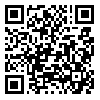Volume 11, Issue 1 (20 2012)
jhosp 2012, 11(1): 73-82 |
Back to browse issues page
Download citation:
BibTeX | RIS | EndNote | Medlars | ProCite | Reference Manager | RefWorks
Send citation to:



BibTeX | RIS | EndNote | Medlars | ProCite | Reference Manager | RefWorks
Send citation to:
Nekuee Moghaddam M, Behzadi F, Keshavarz H. Aspects of organizational cultures: Missionary, participatory, flexibility and bureaucratic in organizational success indexes flexibility, cohesiveness, speed and innovation in public hospitals in Kerman province, 2009 . jhosp 2012; 11 (1) :73-82
URL: http://jhosp.tums.ac.ir/article-1-39-en.html
URL: http://jhosp.tums.ac.ir/article-1-39-en.html
1- دانشکده مدیریت و اطلاع رسانی پزشکی دانشگاه علوم پزشکی کرمان
2- دانشکده بهداشت دانشگاه علوم پزشکی تهران ,faranakbehzadi@gmail.com
3- دانشگاه آزاد اسلامی واحد شهرستان رفسنجان
2- دانشکده بهداشت دانشگاه علوم پزشکی تهران ,
3- دانشگاه آزاد اسلامی واحد شهرستان رفسنجان
Abstract: (19952 Views)
Background: One of the main goals in each organization is to achieve success. The only way to achieve this goal is resort a kind of systematic, native and functional views. Remarkable successes in the recent decades by organizations with the minimum facilities and failure of the organizations by
the best material capabilities is on the other hand, demonstrates the significant role in non-material and spiritual factors in reach to success. The organizational culture is considered as an effective factor in organizational performance. The present study has been done to find relationships between
these two categories organizational culture and organizational success in the public hospitals of the Kerman cities (Kerman, Sirjan, Rafsanjan).
Materials and Methods: This was a descriptive analytical cross-sectional study during the last six months in 2009.The sample size composed the public hospitals in three selected cities of the Kerman province. To define organizational culture, Richard Deft Model was used, and also to identify the
organizational success orator elements were used. Simple random sampling used to choose samples and the Cochrane Formula used to define sample size. The gathered data were analyzed by descriptive (frequencies tables and diagrams) and analytical (correlation tests: Pearson, Spearman, XSquare,
t-tests, ANOVA test) statistics methods through SPSS software.
Results: The results showed that among all kinds of existed organizational culture, bureaucratic culture was the dominant culture with average score 3/162 and the others were: participatory:2/722, flexibility:2/525 and missionary:2/405 respectively. Comparing average score of organizational success
elements showed that flexibility element with average score 2/96 was the most important element and the others were: cohesiveness: 2/885, speed:2/88 and innovation:2/725 respectively. The dominant organizational culture of subordinate hospitals in the Ministry of Health and Medical Education are
bureaucratic culture. The dominant culture in subordinate hospitals of the Social Security Organization is a participatory culture. Also the average number of organization success in subordinate hospitals of the Social Security Organization is significantly greater than the average number of organization
success in subordinate hospitals of the Ministry of Health and Medical Education. In relationship between the organizational culture and organization success, the participatory culture only had a positive correlation with organization success and in the other cultures, either an assumption of lack of
relationship confirmed or a negative correlation was concluded.
Conclusion: Hospitals are the main organizations in providing services in the health care system in each country. Implementing participatory culture, increasing hospital flexibility in an accountability to customers and patients needs play basic roles in patient’s satisfaction to achieve the main mission
of the hospital organization that is providing services
Keywords: Organizational culture, Organizational success, Public hospital, Organizational flexibility, Organizational cohesiveness, Innovation
Received: 2011/10/9 | Accepted: 2012/01/29 | Published: 2013/07/28
Send email to the article author
| Rights and permissions | |
 |
This work is licensed under a Creative Commons Attribution-NonCommercial 4.0 International License. |





